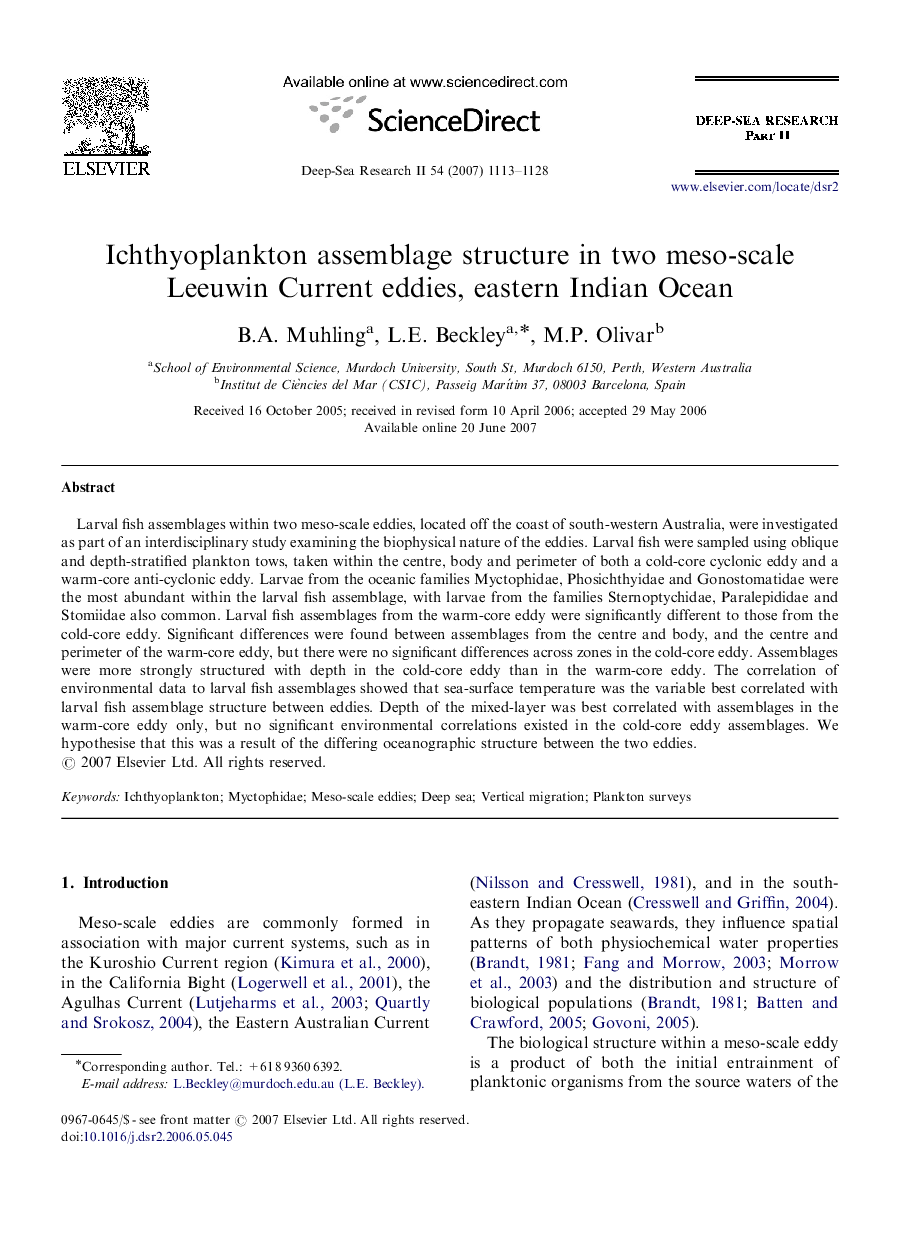| Article ID | Journal | Published Year | Pages | File Type |
|---|---|---|---|---|
| 4538049 | Deep Sea Research Part II: Topical Studies in Oceanography | 2007 | 16 Pages |
Larval fish assemblages within two meso-scale eddies, located off the coast of south-western Australia, were investigated as part of an interdisciplinary study examining the biophysical nature of the eddies. Larval fish were sampled using oblique and depth-stratified plankton tows, taken within the centre, body and perimeter of both a cold-core cyclonic eddy and a warm-core anti-cyclonic eddy. Larvae from the oceanic families Myctophidae, Phosichthyidae and Gonostomatidae were the most abundant within the larval fish assemblage, with larvae from the families Sternoptychidae, Paralepididae and Stomiidae also common. Larval fish assemblages from the warm-core eddy were significantly different to those from the cold-core eddy. Significant differences were found between assemblages from the centre and body, and the centre and perimeter of the warm-core eddy, but there were no significant differences across zones in the cold-core eddy. Assemblages were more strongly structured with depth in the cold-core eddy than in the warm-core eddy. The correlation of environmental data to larval fish assemblages showed that sea-surface temperature was the variable best correlated with larval fish assemblage structure between eddies. Depth of the mixed-layer was best correlated with assemblages in the warm-core eddy only, but no significant environmental correlations existed in the cold-core eddy assemblages. We hypothesise that this was a result of the differing oceanographic structure between the two eddies.
